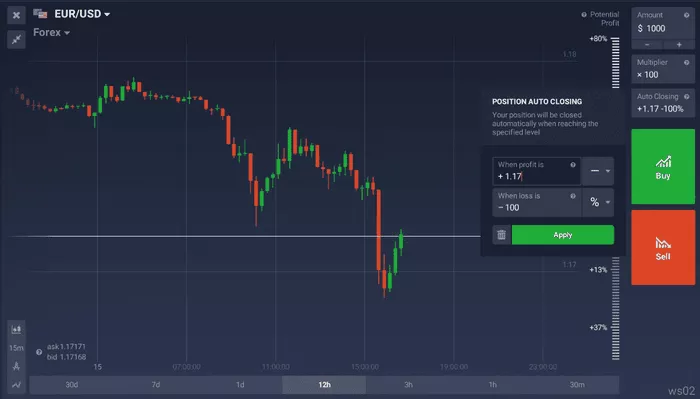Gold has long been regarded as a safe-haven asset, a store of value that can withstand the volatility of financial markets. It has been used for centuries as a form of wealth preservation, and during times of economic uncertainty, gold tends to shine as an attractive investment. While some investors may prefer to invest in physical gold (coins, bars, etc.), others may choose to invest in gold stocks. Gold stocks, which represent ownership in companies involved in gold mining and related activities, can offer significant opportunities for profit. In this article, we will discuss how to invest in gold stocks, the benefits and risks associated with them, and the different ways to gain exposure to the gold mining sector.
Understanding Gold Stocks
What Are Gold Stocks?
Gold stocks are shares in companies involved in the extraction, exploration, or production of gold. These companies operate in various parts of the gold supply chain, from mining and refining to marketing and distribution. Investing in gold stocks allows investors to gain exposure to the gold market without having to directly own physical gold. Gold stocks tend to rise in value when the price of gold increases, but their performance is also influenced by factors such as the company’s operational efficiency, management, and geopolitical risks.
Types of Gold Stocks
There are several types of gold stocks to consider when building a portfolio. These categories differ in terms of risk, potential returns, and exposure to the gold market.
Gold Mining Stocks: These are shares of companies that own and operate gold mining operations. They are directly impacted by the price of gold, as well as the cost of mining and the company’s production levels. Some of the largest gold mining companies in the world include Newmont Corporation, Barrick Gold, and AngloGold Ashanti.
Junior Gold Stocks: These companies are typically smaller, exploration-focused businesses that are in the early stages of developing gold deposits. While they have higher growth potential, they also come with higher risk. Many junior gold stocks are traded on smaller exchanges, and they are often more volatile than larger gold mining companies.
Royalty and Streaming Companies: These companies don’t mine gold themselves but instead provide capital to miners in exchange for a percentage of their future gold production. These companies usually have more stable cash flow because they are not directly exposed to the costs of mining. Examples of royalty and streaming companies include Franco-Nevada and Wheaton Precious Metals.
Gold Exchange-Traded Funds (ETFs): While technically not individual stocks, gold ETFs allow investors to gain exposure to gold mining stocks by buying shares in the fund. These ETFs invest in a diversified portfolio of gold mining companies, making them a popular choice for investors looking to achieve broad exposure to the sector.
How Gold Stocks Relate to Gold Prices
Gold stocks and the price of gold are closely correlated, but not in a perfectly linear way. When the price of gold rises, the revenues and profitability of gold mining companies tend to increase, which can drive their stock prices higher. However, other factors, such as a company’s production costs, operational efficiency, and management, can also impact stock performance.
For example:
If the price of gold rises: Gold miners can generate more revenue from selling their production, which can boost their profits and stock prices.
If the price of gold falls: A drop in the price of gold can squeeze margins for gold miners, potentially leading to lower profits and declining stock prices.
It is important to note that gold stocks can also be influenced by factors that don’t directly relate to the price of gold, such as company-specific risks, geopolitical events, and changes in interest rates.
How to Invest in Gold Stocks
Investing in gold stocks involves selecting the right companies or funds that align with your financial goals and risk tolerance. Below are the key steps involved in the process of investing in gold stocks.
Step 1: Understand Your Investment Goals and Risk Tolerance
Before investing in any asset, it is crucial to understand your investment goals and risk tolerance. Gold stocks, like any other stocks, can be volatile and subject to market fluctuations. Therefore, it is essential to assess whether you are looking for long-term growth, short-term gains, or stability during economic uncertainty.
Ask yourself the following questions:
What is my time horizon? Are you investing for long-term wealth accumulation, or do you need short-term gains?
What is my risk tolerance? Gold stocks can experience significant price swings, particularly for junior gold stocks and exploration companies. Are you comfortable with that level of risk?
Do I want to focus on dividends or capital appreciation? Some gold stocks offer dividend payments, while others may be more focused on capital appreciation.
These factors will help you choose which type of gold stock investment is best suited to your needs.
Step 2: Choose the Right Type of Gold Stock
Once you’ve assessed your goals and risk tolerance, it’s time to decide which type of gold stock investment best suits your needs. As mentioned earlier, you can choose from:
Large-cap gold mining stocks: These companies are generally well-established, stable, and offer lower risk but may have lower growth potential. These stocks are typically suitable for conservative investors seeking long-term capital appreciation with a lower level of risk.
Junior gold stocks: These companies offer higher growth potential but come with higher risk. Junior gold stocks are best suited for risk-tolerant investors looking for exposure to smaller, emerging gold mining companies.
Gold royalty and streaming companies: These companies provide a more stable income stream and are less volatile than traditional mining stocks. They are suitable for investors seeking more stability in their gold stock investments.
Gold ETFs: If you want to diversify your gold exposure without picking individual companies, gold ETFs that track a basket of gold mining stocks can be an excellent option. These funds are less volatile than individual stocks and offer a broader range of gold stock exposure.
Step 3: Research Gold Stocks
Once you’ve chosen the type of gold stock that aligns with your goals, it’s important to conduct thorough research on the companies you’re considering. Look for key factors such as:
Financial Health: Review the company’s balance sheet, income statement, and cash flow to assess its financial stability.
Production Costs: Consider how much it costs the company to mine gold, as high production costs can negatively impact profits, especially if gold prices decline.
Reserves and Resources: A company’s gold reserves are critical to its future growth. Look for companies with a strong pipeline of gold reserves, as this indicates they are well-positioned to continue producing gold for years to come.
Management: The quality of a company’s management team is critical to its success. Look for companies with experienced leadership and a proven track record in the mining industry.
Geopolitical Risks: Many gold miners operate in developing countries or regions with political instability. It’s important to assess the risks associated with the company’s operating locations.
Step 4: Open an Investment Account
To invest in gold stocks, you will need a brokerage account. Choose a brokerage firm that offers access to the stock exchanges where gold stocks are traded (e.g., the New York Stock Exchange, NASDAQ, or Toronto Stock Exchange). Many online brokers allow investors to purchase shares of individual stocks, ETFs, and mutual funds. Some popular online brokerage firms include:
- Fidelity
- TD Ameritrade
- Charles Schwab
- Robinhood
- E*TRADE
These platforms offer a variety of tools and resources to help you track your investments and research gold stocks.
Step 5: Buy Gold Stocks or ETFs
Once your brokerage account is set up, you can place orders to buy shares of gold stocks or ETFs. If you are buying individual stocks, decide how many shares you want to purchase and at what price. For ETFs, you can purchase shares in the same way as individual stocks, and they provide exposure to a diversified portfolio of gold mining companies.
It’s a good idea to implement a strategy, such as dollar-cost averaging, where you invest a fixed amount at regular intervals, regardless of the price. This approach helps mitigate the impact of short-term price fluctuations.
Step 6: Monitor Your Investments
After purchasing gold stocks, it’s important to regularly monitor your investments. Keep track of gold prices, company performance, and any relevant news that might impact the stock market. Gold stocks can be impacted by macroeconomic factors, geopolitical events, and changes in interest rates, so staying informed will help you make better decisions about whether to buy, sell, or hold your investments.
Risks of Investing in Gold Stocks
While gold stocks can offer significant opportunities, they also come with their own set of risks. Some of the key risks include:
Market Risk: The value of gold stocks can be volatile, and the price of gold can fluctuate based on economic and geopolitical factors.
Operational Risks: Gold mining companies face operational risks, such as equipment failures, labor disputes, or natural disasters, which can impact production.
Geopolitical Risks: Many gold miners operate in politically unstable regions, which can lead to disruptions in operations or adverse regulatory changes.
Currency Risk: Gold is typically priced in U.S. dollars, and changes in the value of the dollar can impact the profitability of gold mining companies.
Conclusion
Investing in gold stocks offers a way to gain exposure to the gold market without the complexities of buying physical gold. Whether you’re looking for stable returns through large-cap mining stocks, seeking high growth potential with junior miners, or preferring the stability of royalty and streaming companies, there are numerous options available for investors.
Before making any investment, it is essential to assess your financial goals, risk tolerance, and time horizon. Thorough research and careful selection of gold stocks can help you create a portfolio that aligns with your investment objectives. By taking a disciplined and informed approach, you can use gold stocks as a valuable component of your broader investment strategy.
Related topics:




























